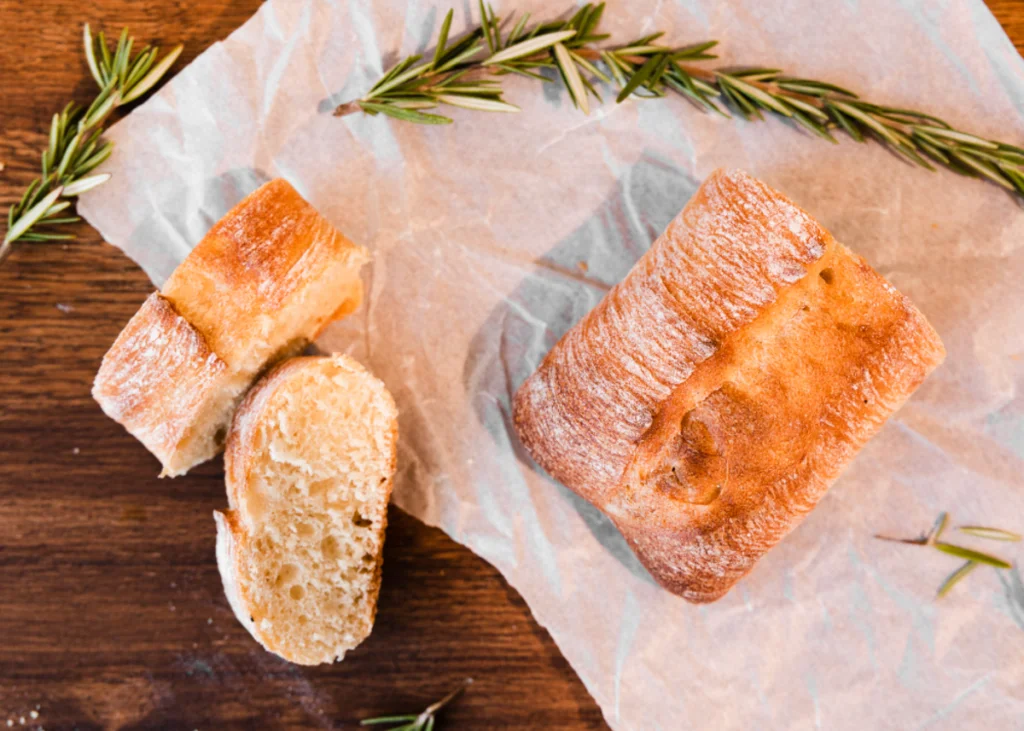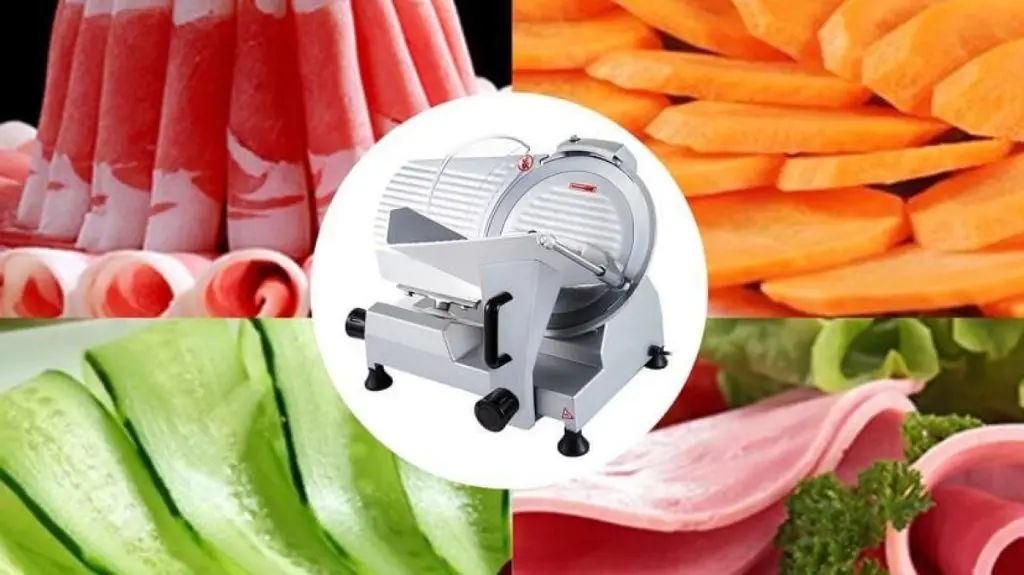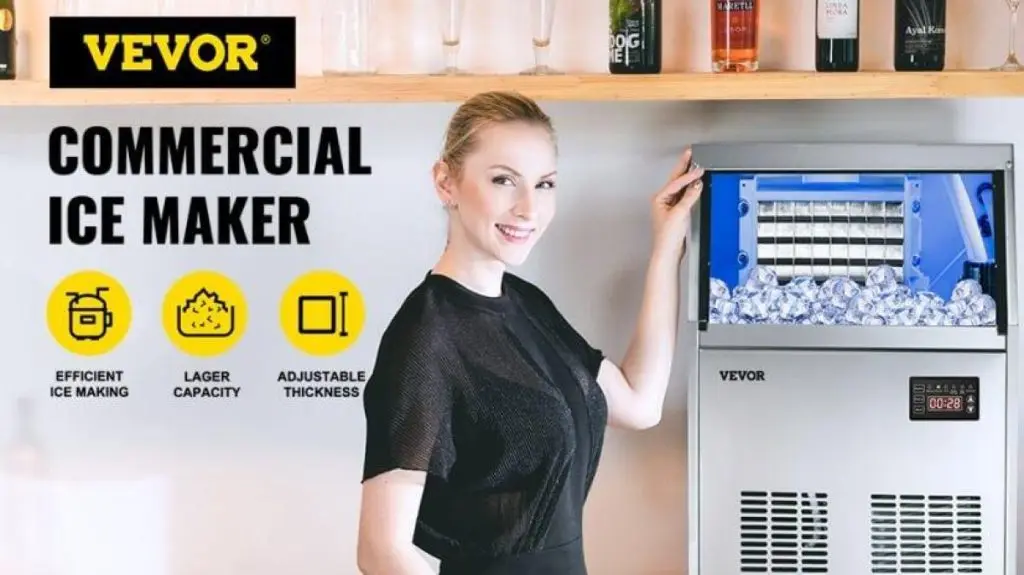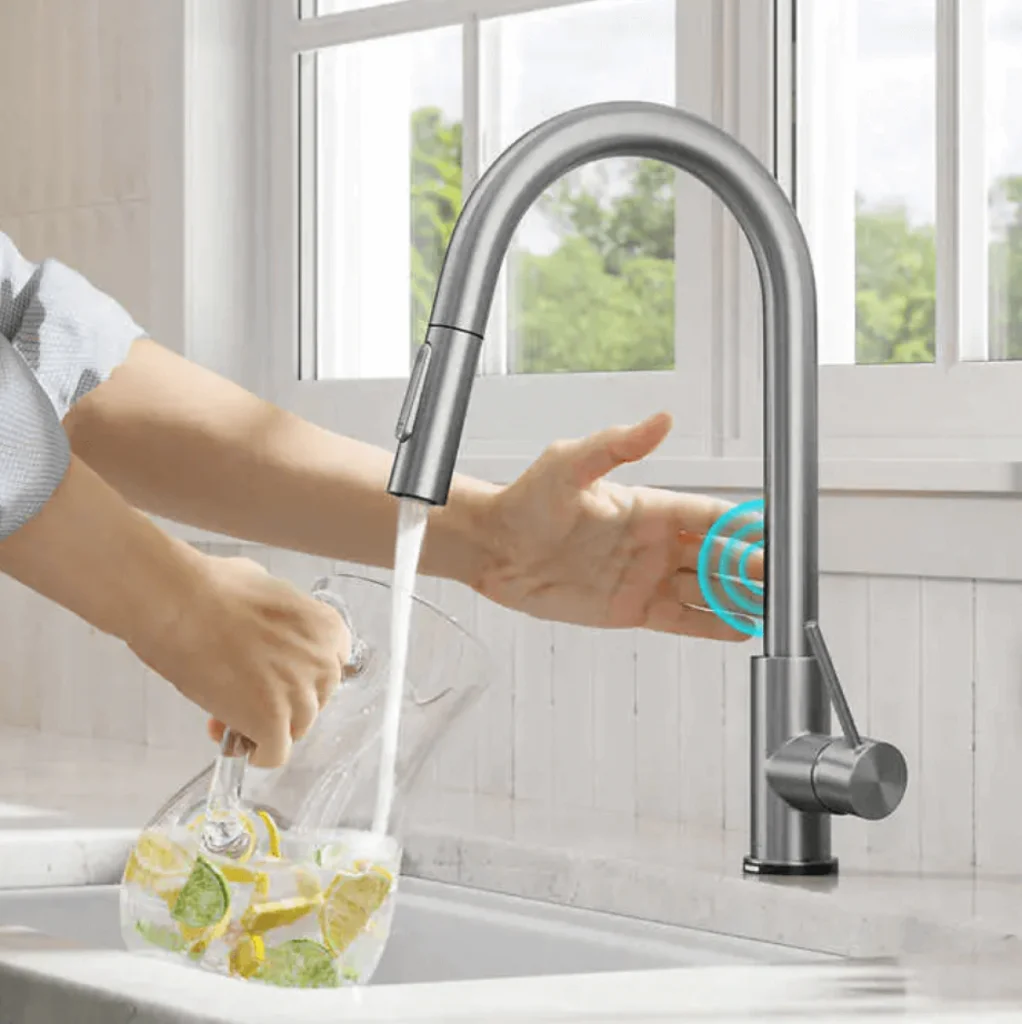Have you ever bought bread and found it going stale within a few days, and a question arises: can you vacuum seal bread? The answer is yes. Vacuum sealing is a simple way to keep bread fresher for longer. When bread is exposed to air, it starts to go stale faster due to moisture loss. It can also develop mold as air contains mold spores. By removing air using a bread vacuum sealer, you create an airtight environment that prevents these issues.
Vacuum sealed bread leftovers fresh for a long period when compared with a pair of days without sealing. It’s a simple process! Put your bread in a bag, seal it with the vacuum sealer to remove air, and store it. Learn about the good things that happen when you vacuum seal bread at home in this article.
This article will show the kinds of bread you can seal and how long it stays fresh. At last, we give step by step instructions and tips on vacuum sealing with a chamber vacuum sealer.
Can I Vacuum Seal the Bread?
Yes, you can vacuum seal bread to help prolong its freshness and prevent it from becoming stale. A bread vacuum sealer is a machine that eliminates air from a plastic sack or inflexible compartment. The pack or compartment is closed while a vacuum pump clears practically all the air inside. This absence of oxygen prevents mold growth and staling, expanding the time span of the usability of bread significantly.
What are the Benefits of Vacuum Sealing Bread?
Vacuum sealing offers several benefits for storing bread. Removing oxygen prevents mold growth, which leads to quicker staleness and spoilage. It also stops ice crystals from forming in frozen items, which protects texture.
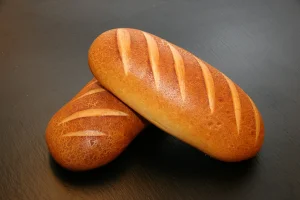
As there is no air, there is less space for bread to be crushed or damaged during storage or transport. Additionally, keeping air out ensures minimal moisture loss. Vacuum sealed bread can last up to three to five times longer than non-vacuum-sealed varieties.
What Kinds of Bread Can Be Vacuum Sealed?
Most bread types can be vacuum sealed effectively, including sliced sandwich bread, rolls, bagels, English biscuits, croissants, crumpets, craftsman sourdough loaves, tortillas, pitas, brioche, organic product bread, and sweet bread like banana.
The exception is bread with a very soft dough structure, like some enriched milk bread or challah, as they can become distorted or compressed without internal air pockets.
How Long Does Vacuum Sealed Bread Last?
Shelf life varies dramatically based on the storage method:
Room Temperature Storage
Vacuum sealed bread left at room temperature of around 70°F will stay fresh for 2-3 weeks before noticeable staleness or mold growth occurs. Monitoring any temperature fluctuations and ensuring a complete vacuum seal is key for maximal shelf life without refrigeration. Proper sealing removes oxygen and moisture to prevent early spoilage.
Refrigerated Storage
When stored in the refrigerator from 35-40°F, properly vacuum sealed bread will last between 4-6 weeks before quality loss. The cold regulated environment dramatically slows mold growth and starch retrogradation that leads to firmness or staleness.
Checking that bag seals remain completely airtight every 1-2 weeks allows catching any leaks early to prevent moisture loss or air exposure.
Frozen Storage
For extended freezing up to 6 full months, vacuum sealed bread retains excellent texture, taste, and softness after thawing. Monitoring for signs of freezer burn or ice crystals is important, as this indicates compromised freezer temperature fluctuations.
The vacuum sealing machine removes air spaces, so bread holds its shape better when frozen for half a year. As long as complete vacuum pressure is continually maintained within sealed bags, bread can be stored safely frozen for up to 6 months before quality deterioration occurs.
Preserving Your Bread with Vacuum Sealer
Want to enjoy your artisan bakery loaf or homemade banana bread for weeks instead of days? Vacuum sealing pumps out oxygen so bread stays soft and mold free up to 6 times longer. Follow this beginner’s guide to vacuum packing bread for maximum freshness.
Vacuum sealing needs just a few supplies:
Vacuum Sealer Systems
A chamber vacuum sealer is the safest choice to prevent crushing delicate baked goods. For optimal sealing results, pick a stainless steel chamber like the VEVOR Stainless Steel Chamber Vacuum Sealer, which fully fits loaves. Standard chamber sizes allow sealing up to 1+ bags or loaves at a time.

Chamber vacuum sealers fully enclose bags before extraction. It gently draws air out, preventing crushing. Models like the Chamber Vacuum Sealer have professional quality construction for quick, consistent seals.
Chamber sealers also seal faster than exterior suction machines. The VEVOR chamber vacuum sealer takes just 35-60 seconds! Chamber systems better prevent freezer burn, too, when bread is stored for months.
With the right gear, sealing technique, and storage, vacuum sealed bread keeps an irresistible taste and texture for weeks, not days!
Bags
Choose high quality, food grade vacuum bags that are heat sealable and help maintain an even vacuum. Use bags designed for bread, as these are extra thick with safe plastics approved for food. Bread bags are available in convenient rolls of custom sizes, from small rolls up to full standard loaves. The extra room inside allows the vacuum to form around baked goods without compression.
Storage Space
Preserve bread short term in the pantry, longer duration in the fridge, or up to 6 months frozen. Just be sure to leave headspace for freezer expansion. Clearly label bags with contents for easy identification. Vacuum seal bread is safe to store anywhere you have space.
Steps to Vacuum Seal Bread
Vacuum sealing is a revolutionary food preservation technique that pumps all oxygen out of storage bags before fully heating, sealing them shut. This oxygen free environment dramatically slows down the deterioration and drying processes.
So delicate bakery bread and hearty homemade loaves stay incredibly soft, mold resistant, and full of fresh taste for weeks or months longer without artificial additives. Carefully follow these key vacuum sealing steps to safely maximize bread shelf life, letting you enjoy your culinary creations much longer.
Slice the Bread
For best results without crushing, sealing sliced bread is recommended over entire loaves. Prepare slices between 1⁄4 to 1⁄2 inch thick. Thinner slices stack neatly in bags, getting more mileage from supplies. Slimmer slices also seam together better for an efficient vacuum seal.
Thicker slices around 1⁄2 an inch help retain more moisture and prevent the bread from drying out in storage. Heartier wheat, multigrain, and mixed grain breads can be safely cut thicker without risk of damage, thanks to their dense, hardy structure.

Place Slices in Bags
Vacuum sealable bags designed for bread storage are best to use. Carefully place stacks of sliced bread flat and evenly into each bag. Position the contents to stand upright, not stacked horizontally. Overfilling risks dense areas failing to seal properly. Underfilling waste bags.
Leave 2-3 inches of headspace at the top of filled bags. This space allows the vacuum sealing machine to shrink the bag down fully. Then, air can be thoroughly removed without compressing the bread.
Vacuum Seal Bags
With filled bags ready, fully close and seal each one using your bread vacuum sealer machine according to its directions. Chamber style vacuum sealers are safest for pieces of bread.
The machine will suck out the air and humidity inside until reaching the target pressure levels. Then, the bag top melts neatly shut. Typical sealing time is 30-60 seconds. The solid result is an airtight, oxygen-free environment that keeps bread fresh.
Store Sealed Bags
Finally, organize sealed bread bags for storage. Refrigerating extends shelf life to 4-6 weeks. For storage up to 6 months without staleness or mold, place sealed bags flat in the freezer.
Remember to label each vacuum sealed bag with contents and date before putting it into storage. Over time, in the freezer, ice crystals can form from temperature fluctuations, which compromises seals. Check bags occasionally for damage.
Follow these vacuum sealing steps properly, and your bread will stay impressively soft and delicious for your enjoyment weeks and months later!
Tips for Vacuum Sealing Bread
When we talk about can you vacuum seal bread? The answer is yes, but these tips help us get the most out of vacuum sealing bread require using the proper technique. Here are pro tips for success:
- Use quality bags: Choose thicker, food grade bags labeled as vacuum sealable, with durability for freezing. Avoid cheaper bags prone to ruptures.
- Seal one loaf per bag: Packing multiple loaves together makes removing air difficult. Better to seal loaves individually.
- Pre-freeze bread overnight: This firms the texture for better vacuum sealing results.
- Allow headspace in bags: Leave 2 3 inches at the top so the bread isn’t compressed during air suction.
- Reinforce seal if needed: Double seal by simply repeating the vacuum process for an extra tight seal.
Other Bread Storage Tips
Beyond the vacuum sealing machine, additional methods help extend fresh bread’s shelf life. Store bread at room temperature in paper bags to allow breathing. Bread boxes also help contain moisture and prevent drying for up to one week.
Freezing bread without vacuum sealing lets it keep for 2-3 months. Slice bread beforehand so you can remove only what’s immediately needed upon thawing.
Refrigeration is useful, too. Storing bread in reusable, airtight plastic containers greatly reduces mold growth from moisture. Fridge storage can make bread last for 1-2 weeks with improved fresh taste.
FAQs
Q: Does vacuum sealing bread prevent mold?
Yes, vacuum sealing is highly effective at preventing mold growth because it removes oxygen from bags which mold needs to thrive. As long as the airtight seal created remains intact with no air leaks, bread stored in a vacuum sealed environment can stay fresh and mold free for weeks or months longer than conventional storage methods.
Q: How do you vacuum seal bread without smashing it?
To prevent vacuum compression damage, it is best to seal sliced bread rather than entire loaves. Pre-freeze bread for 3-4 hours before sealing so it firms up slightly while retaining the flexibility to handle vacuum pressure without crushing. Leave ample headspace by not overfilling bags. And use a chamber style vacuum sealer that gently envelops the entire bag to draw air out rather than harsh suction.
Q: Can I freeze vacuum sealed bread? Is it safe?
Yes, you can absolutely freeze vacuum sealed bread safely. In fact freezing extends storage life substantially to 6 full months if continually frozen. The lack of oxygen exposure prevents freezer burn too. Thaw frozen vacuum sealed bread overnight in the refrigerator before serving for best texture.
Q: Does vacuum sealer allow other foods?
While bread storage takes advantage of vacuum sealing exceptionally well, the process works great for all kinds of foods. From cooked and uncooked meats, to fruits, vegetables, cheeses, baked goods, leftover meals, coffee beans, and beyond, vacuum sealing leading to months of extra freshness.
Conclusion
Vacuum sealing is a straightforward and successful method for keeping bread fresher significantly longer than conventional storage. By pumping all of the air out of plastic bags with a vacuum sealer, vacuum seal bread can maintain its freshness and prevent mold growth for up to six times longer than normal without growing stale quickly.
This article outlined can you vacuum seal bread?, the key advantages of vacuum sealing bread, such as inhibiting mold and moisture loss. Instructions were provided for easily vacuum sealed sliced bread at home.
For those seeking to enjoy homemade or store bought bread for weeks or months after purchasing or baking, vacuum sealing is a simple solution. Using a chamber vacuum sealer makes the process rapid and hassle free.
The VEVOR model profiled here is a good option, as chamber vacuum sealers are ideal for gently sealing sliced bread without crushing. The many benefits of vacuum sealing for preserving bread were examined in detail.

